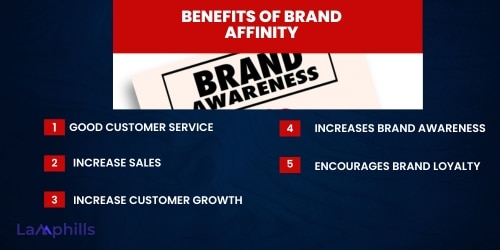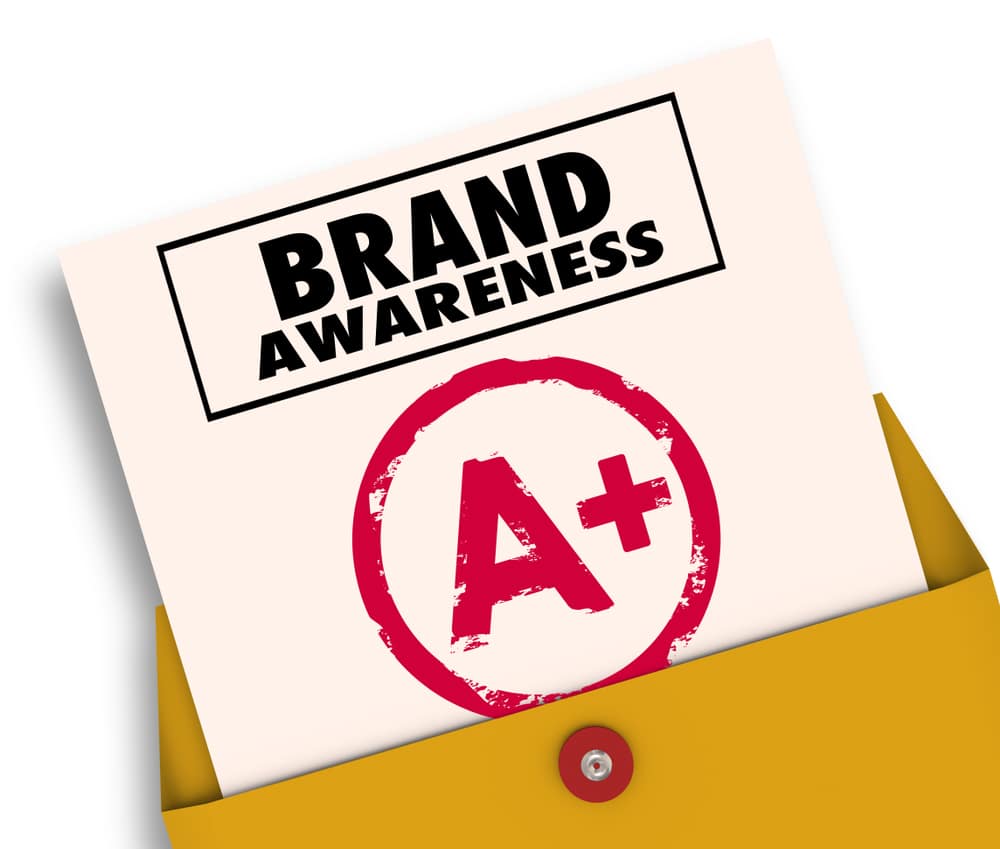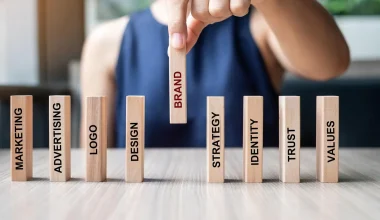I remember the first time I truly understood brand affinity. It wasn’t during a flashy ads campaign or a celebrity endorsement. It was a conversation with a friend, raving about a specific pair of sneakers. They weren’t just praising the comfort or design; they were talking about the brand’s environmental initiatives and commitment to social justice, values that mirrored their own.
That’s brand affinity in action – a deep connection that goes beyond the product itself. It’s what transforms customers into loyal fans, the kind who actively promote your brand and become your biggest advocates. But how do you cultivate this powerful bond? How do you measure the success of your efforts? This guide will be your roadmap to building and measuring brand affinity, packed with actionable strategies and insightful metrics.
I’ll delve into the core of what makes a brand truly resonate with its audience, and equip you with the tools to not just build brand awareness, but brand love. So, get ready to discover the secrets to fostering brand affinity that will have your customers singing your praises.
Key Points
- Authentic Storytelling: Building brand affinity begins with sharing your brand’s story authentically and relatable. Highlighting your values and mission helps forge a personal connection with your audience, fostering a sense of shared identity.
- Consistent Branding: Maintaining a cohesive brand identity across all touchpoints, from your website to social media and packaging, is crucial. Consistency breeds trust and familiarity, key ingredients in nurturing brand affinity.
- Customer Engagement: Actively engaging with your audience on social media and beyond demonstrates that you value their input and opinions. Responding to comments and messages, as well as encouraging user-generated content, helps strengthen the bond between your brand and its customers.
- Exceptional Customer Service: Providing outstanding customer service at every interaction point is essential. Going above and beyond to resolve issues promptly and exceed expectations helps build a positive brand perception and fosters loyalty.
- Community Building: Creating a sense of community among your customers through forums, events, or local initiatives can deepen brand affinity. Encouraging customers to connect with each other and with your brand cultivates a feeling of belonging and strengthens their emotional connection to your brand.
What Is Brand Affinity?
Brand affinity is the emotional connection that customers have with a brand and may be developed via marketing activities. This strategy encourages loyalty and new customer acquisitions, highlighting the importance of emotional ties in building a strong brand identity.
How Do You Create Brand Affinity?
It’s not enough to just sell a product, you gotta make people care about your brand. Like, really care about it. That’s brand affinity. When customers feel a connection that goes way beyond the features. Here are some strategies to achieve that:
- Authentic Storytelling: Share your brand’s story in a genuine and relatable way. Highlight your values, mission, and the people behind your brand to create a personal connection with your audience.
- Consistent Branding: Maintain a cohesive brand identity across all touchpoints, including your website, social media, packaging, and advertising. Consistency builds trust and familiarity with your brand.
- Customer Engagement: Actively engage with your audience on social media, respond to their comments and messages, and encourage user-generated content. Make your customers feel heard and valued.
- Exceptional Customer Service: Provide outstanding customer service at every interaction point. Resolve issues promptly and go above and beyond to exceed customer expectations.
- Community Building: Foster a sense of community among your customers by creating forums, hosting events, or sponsoring local initiatives. Encourage customers to connect with each other and with your brand.
- Personalization: Tailor your marketing messages and product offerings to the specific needs and preferences of your target audience. Personalization shows that you understand and care about your customers as individuals.
SEE ALSO: Brand Assets: 15 Examples That Will Strengthen Your Band
How is Brand Affinity Measured?
Forget just counting likes and shares – measuring brand affinity goes way deeper. It’s about understanding how much your audience truly connects with your brand, on an emotional level. Here’s how I track it:
#1. Social Media Comments
First, I listen closely. Social media comments are gold genuine praise, questions, and even constructive criticism which reveal how people feel about your brand. I remember a time I accidentally posted a funny typo in a tweet? The outpouring of playful replies and memes about it showed a real sense of community and connection.
#2. Digital Monitoring
Numbers matter too, but not just follower counts. Look at things like time spent on your website. Are people just glancing or diving deep? High engagement tells you they’re genuinely interested.
#3. Customer Loyalty
Finally, there’s the ultimate test – customer loyalty. Repeat purchases and referrals are like a warm hug, a clear sign your brand has won a special place in their hearts. It’s not just about the product anymore, it’s about the feeling.
Read: Customer Communication: 2024 Effective Strategies & Tools
What is The Difference Between Brand Loyalty and Affinity?

Brand loyalty, I used to think, was the real deal. Customers repurchasing religiously, right? But lately, I’ve been obsessed with a different concept: brand affinity. It’s deeper and more emotional. Here’s the difference: Brand loyalty refers to customers’ devotion and steadfastness to a brand, whereas affinity refers to how people feel about the brand – their appeal and enticement.
Imagine you buy a coffee every morning from the same place because it’s convenient, and the barista remembers your order – that’s loyalty. Now, picture a brand that aligns with your values, their environmental practices resonate with you, their social media makes you laugh – that’s affinity. You’d go out of your way to support them, even if it meant a slightly longer walk.
Let me tell you about a local bookstore. Sure, they have a great selection, but that’s not all. They host author talks and sponsor a book club I adore, and their staff is ridiculously passionate. I feel like I’m part of a community there. I wouldn’t just buy a book anywhere else, even if it was a few bucks cheaper. That’s the power of brand affinity – it transcends price and becomes an emotional connection. Loyalty is great, but affinity makes you a brand champion.
SEE ALSO: Brand Engagement: Meaning, Importance & Helpful Tips
What are The Benefits of Brand Affinity?

Believe me, brand affinity is the magic ingredient businesses crave. It’s the difference between someone grabbing a random water bottle at the checkout and reaching for your brand every time. It fosters a connection that goes way beyond the product itself.
Here are benefits of the company’s affinity include the following:
#1. Good customer service
Because corporations normally invest more effort into providing exceptional service to consumers when attempting to build a commercial affinity, strong customer service is a byproduct of affinity. Companies develop customer service rep training programs so that they can provide dependable support and access all of the information they need to assist consumers.
Affinity for a brand improves customer service by encouraging a firm to interact with customers and offer more appealing goods and services. For example, a corporation may establish more personal ties with customers to make them feel appreciated and give better service.
#2. Increase sales
An affinity for a brand leads to greater sales. Customers feel more confident about making purchases when they believe the brand shares their ideals. Customers who trust a company continue to buy from it, and they may even make larger, unexpected purchases. A firm may enjoy an increase in revenue when its consumer base grows due to brand affinity.
#3. Increase customer growth
When customers like a brand, they are more likely to suggest it to others. Because many individuals trust their friends’ recommendations or opinions more than marketing efforts, client referrals continue to be an efficient way to expand a customer base. Customers who are recommended to try your service or product may then refer others, resulting in an increased customer base.
#4. Increases brand awareness
Brand awareness is an important aspect of sales since a company’s consumers must be aware of it to acquire its products and services. Because your customers talk about your company with others, affinity with a brand increases brand awareness as more people interact with it. This remains valuable since it allows your customers to do part of your promotion for you by sharing their feelings.
#5. Encourages brand loyalty
When a consumer does business with a firm regularly and prefers their products over similar commodities in the same market, this is considered brand loyalty. This, like business affinity, focuses on how a consumer perceives the company. Because a consumer and a business share values, the customer is more inclined to purchase from that firm regularly, implying that brand loyalty might evolve into affinity over time.
Downlod Lamphills Checklist For Brand Affinity
What Drives Brand Affinity?

Brand affinity indicates how people feel about a certain brand. Companies may increase brand affinity by building emotional ties with consumers and promoting corporate principles, which frequently results in loyal support and new customer acquisition.
Let me tell you about mine. I used to be a die-hard fan of a particular clothing brand. Their clothes were great, but then something shifted. Their environmental practices came under fire, and it clashed with my own eco-conscious beliefs. Slowly, the brand I felt connected to felt distant. The quality clothes became just…clothes. This experience highlights a key driver: shared values. When a brand champions cause you to care about, it fosters a sense of community and belonging.
But brand affinity isn’t all about saving the planet (although that’s pretty awesome). It’s also about the emotions a brand evokes. These positive experiences build a connection, making you feel good about interacting with the brand. Finally, there’s the element of experience. Consistent quality, reliability, and a touch of surprise and delight – these all contribute to a positive brand experience, the bedrock of brand affinity.
It’s the feeling of knowing you can always count on a brand to deliver, not just a product, but a feeling. When these elements – shared values, positive emotions, and exceptional experiences – come together, brand affinity is born. It’s the feeling that this brand isn’t just a faceless corporation; it’s a friend who gets you.
SEE ALSO: How To Build a Good Reputation: Key Strategies from Experts
What is An Example of Brand Affinity Marketing?
Brand affinity marketing goes beyond just selling a product; it’s about creating a loyal fanbase. Imagine this: I’m an outdoor enthusiast, and for years, I’ve relied on a specific brand for their top-notch hiking boots. They’re built to last, comfortable on long treks, and the company is known for its commitment to sustainable practices. But that’s not all. They sponsor local trail cleanups, host educational events on outdoor safety, and even have a social media campaign where they share user-generated photos of breathtaking hikes. This brand isn’t just selling boots; they’re selling a lifestyle that resonates with me. That’s brand affinity marketing in action. By aligning their brand values with my own, they’ve built a deep connection that goes far beyond a single purchase.
Clients who have a favorable personal experience with a brand, such as helpful customer service, are more likely to build strong brand attachment. For example, if a customer understands that a firm has a no-hassle return policy, it makes the decision to buy from them easier.
I see this with my favorite coffee shop too. Sure, their lattes are delicious, but they also roast their beans in-house, source them ethically, and host local artist showcases every month. It’s a place where I can grab a quality drink, support a business I believe in, and feel like part of a community. That’s the power of brand affinity marketing – it creates a lasting emotional connection that keeps you coming back for more.
Conclusion
Building brand affinity isn’t a one-time thing; it’s a continuous journey. By prioritizing customer experience, fostering a community relationship, and aligning your values with theirs, you’ll cultivate a loyal following that goes beyond transactions. Remember, brand affinity isn’t just about likes and comments; it’s about genuine connections.
So, use the tools in this guide to measure what matters – customer satisfaction, brand advocacy, and long-term loyalty. As you refine your strategies and celebrate your wins, you’ll witness the magic of brand affinity unfold. Imagine a world where your customers become your biggest cheerleaders, organically promoting your brand because they truly believe in what you stand for. That’s the power of brand affinity, and it’s within your reach. Let’s get started.
Related Articles:
Expert Tips to Measuring Brand Equity in 2024 (Detailed Guide)
Top Rebranding Strategies That Sparks Massive Business Growth
Top Content Marketing Books Every Entrepreneur Should Read in 2024





